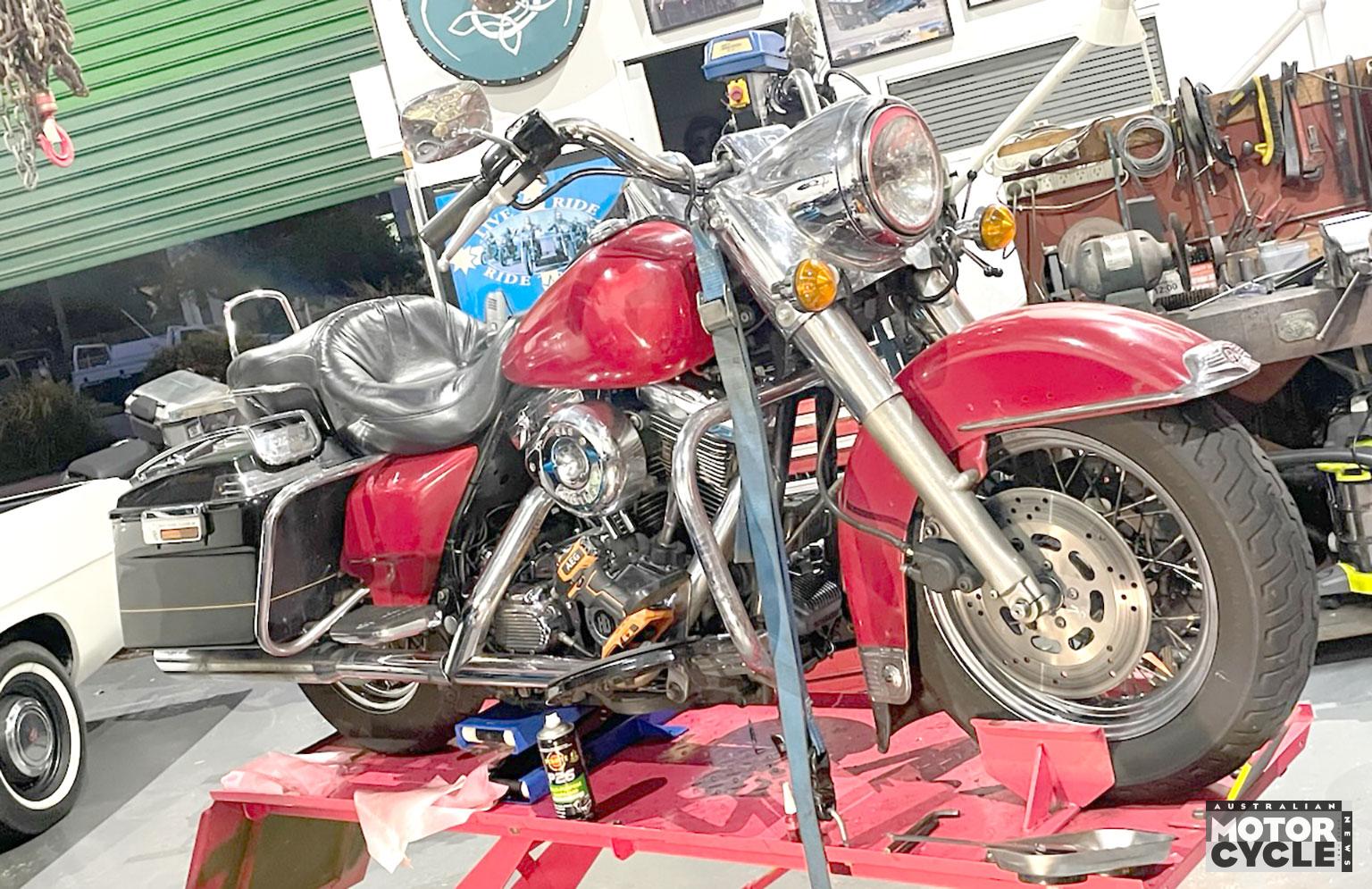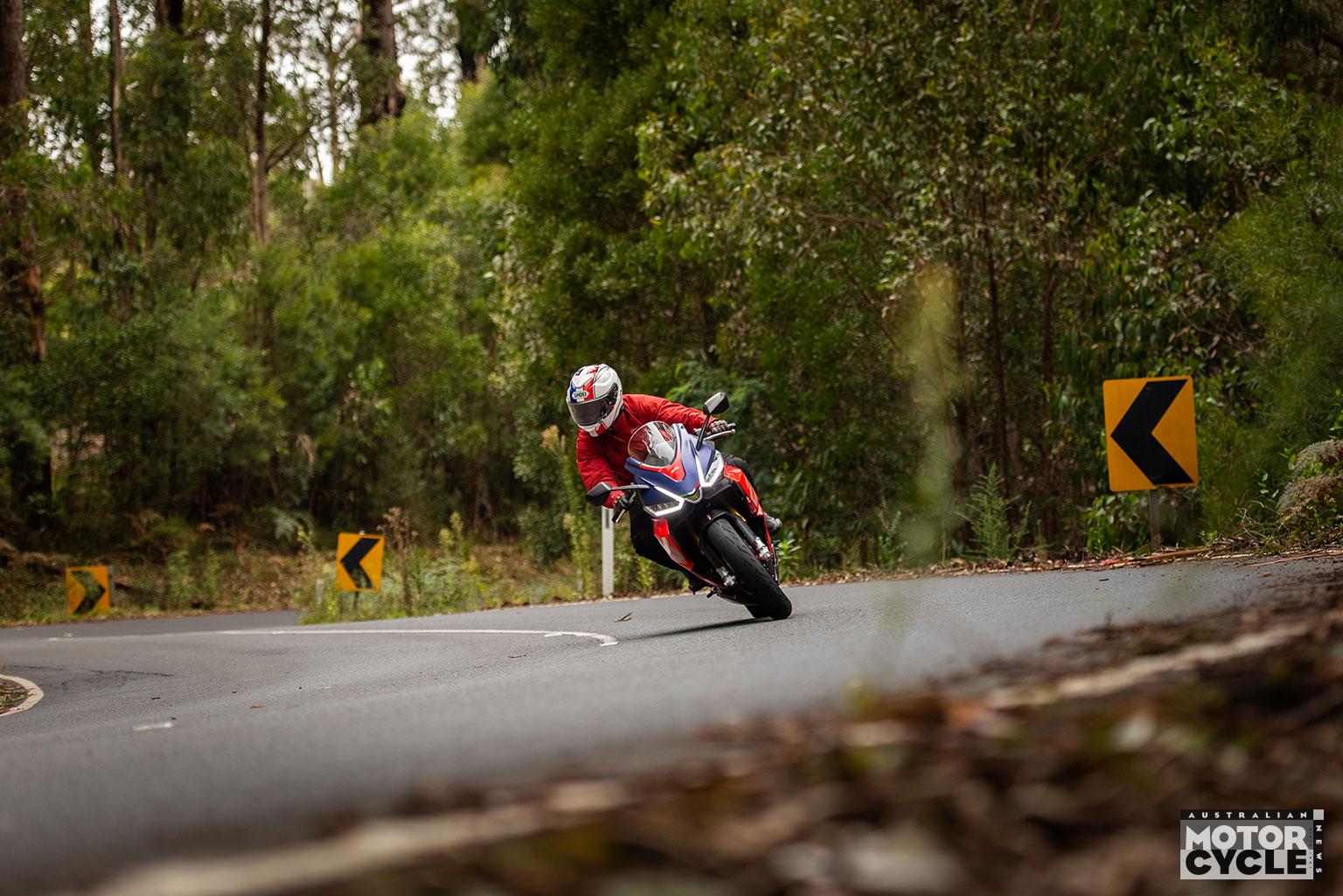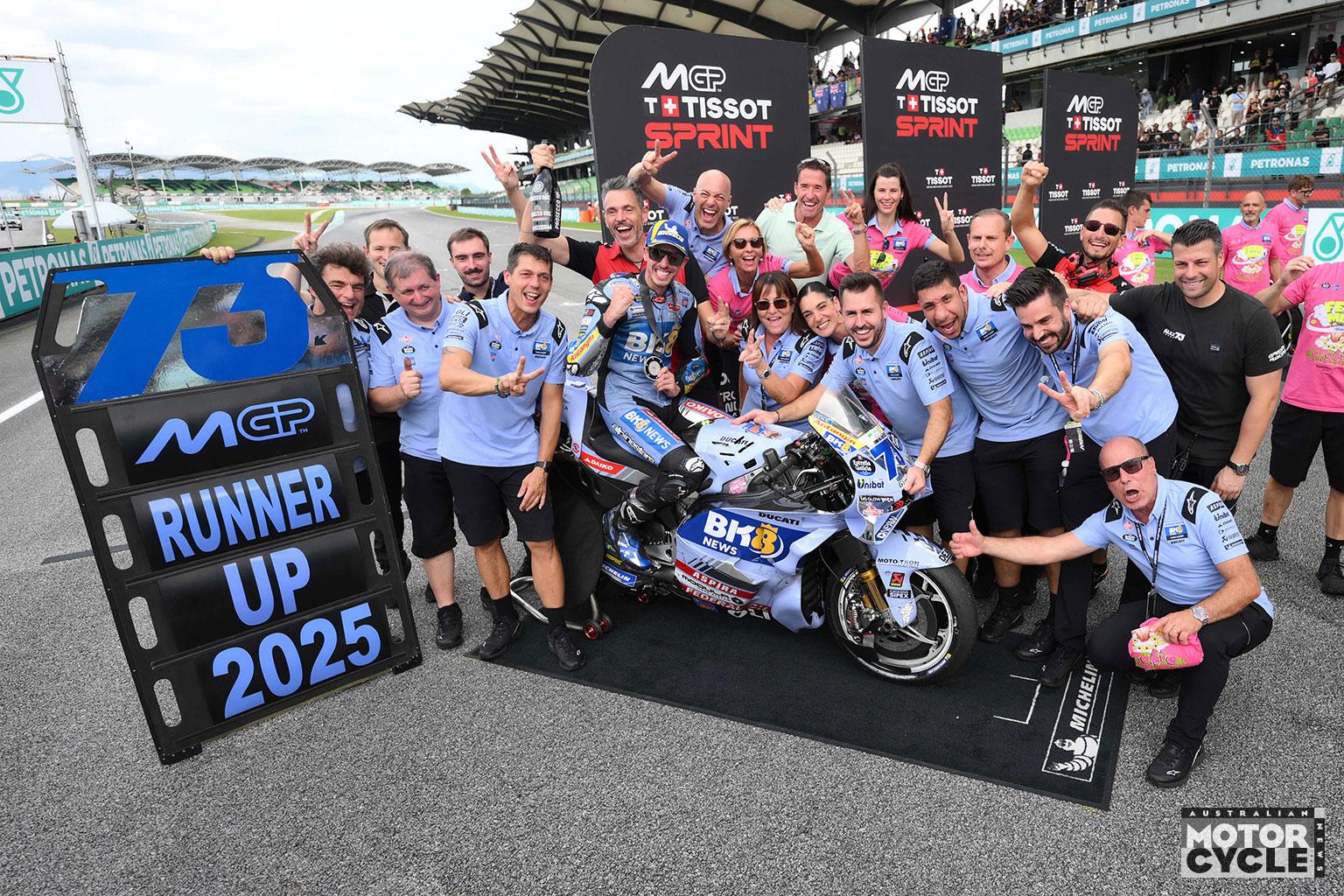You don’t need us to tell you that cars and bikes are different. But nowhere is that more fundamental than when it comes to a shunt. That’s because a car is designed to cocoon and protect you. It holds you in place with a chair and belts, and fires off air-bags to cushion the forces. It even deforms gradually via its crumple-zone design, reducing the severity of the deceleration.
But not a bike. Nope, even with the ABS and traction-control of a modern bike, once the prang has become inevitable, the bike itself is of absolutely no use to you. Mainly because you and it parted ways the millisecond it slipped, gripped and high-sided you down the road. At this point, the only thing likely to do you any good is the gear you’re wearing.
Motherhood statement? Okay, so then why has it taken so long to get an independent rating system for the riding gear that could easily keep you out of hospital or even save your life?
Sure, we’ve had Australian Standard for helmets for decades. But a helmet is just part of the protection picture and, if you listen to the experts, has maybe led us to believe that it was the only element worthy of such a standard. And when you see the number of people still riding in a $1000 helmet along with T-shirts and shorts, maybe there’s something to that view. And meantime, you walk into a bike shop or get online looking for a new set of riding duds, and you’re effectively flying blind. Trust us, brand names and price are no indication of how well a piece of clothing is going to protect you.
But another part of the delay has been the attitude of we riders to the idea of being told what we can and can’t do and what we can and can’t wear. Which is where a new motorcycle clothing rating scheme comes in. It’s called MotoCAP and it’s a collaboration between Deakin University in Victoria, various government agencies, insurers and motorcycling groups from around the country. But rather than try to prescribe what gear we must and must not wear, the MotoCAP program aims at giving us the information we need to make our own decisions.
And according to the program’s chief scientist (and Honda GB400 rider) Chris Hurren, the ratings system at the heart of the scheme will “never become a mandatory Standard”. And in case you’re still worried, the clothing addressed by MotoCAP is rated not just for its protection, but also for comfort. That’s because there’s an understanding among Hurren and his clipboard disciples that on a 40-degree day, you might just be better off in a cooler jacket that scores three stars for protection and five for comfort, rather than the other way around where the heat build up in your body’s core can easily lead to distraction, a loss of concentration and, you guessed it, a prang.
“Also, if all we were interested in was protection, we’d have ended up with a suit of armour,” grins Hurren.
As it stands, jackets, pants and gloves are being tested now, but there’s a hope that boots can be included in the testing at some point in the not-too-distant future. Within that regime, the tests to assess protection include an abrasion test, a seam-burst test and an impact test (not unlike a helmet test). Comfort ratings, meanwhile, are achieved by a sweat test and a waterproofing test.

It mightn’t be sexy to look at, but it is science in the old-fashioned sense of the term, and double-blind tests are often performed to check the accuracy. And MotoCAP hasn’t had to reinvent the wheel, either. Each test rig was already in existence in some research facility or other, and apart from a few minor modifications for efficiency, there’s no one-off engineering here. The exception is the water-test rig, but since that amounts to a motorcycle and a pressure washer, that didn’t require a team of inventors either.
The results are expressed as a star-rating from one to five, five being the best. The numbers from each test are put in a computer, electronically crunched and a star rating emerges as an easily-digestible, readily comparable value. The protection and comfort ratings have been kept separate, allowing the consumer to decide what’s more important for the type of riding they do. At the moment, only one jacket has achieved five stars for protection and only about 10 percent of the stuff on the market will be tested each year. That hardly makes the rating system a definitive one, but, just as some protective riding gear is better than none, some information is better than the info-vacuum that used to exist. At the moment, the MotoCAP program has been commissioned to test 152 garments a year.
“We know we’ll never get every garment out there,” admits Hurren. “But we’re aiming for the ones that are most likely to be in use.”
The program started in October last year, and Hurren points out that starting off with baby steps was deliberate.
“We wanted to take the industry with us, so we didn’t want to scare any manufacturers or importers. We certainly don’t want to destroy anybody’s business. We think the ratings system will also give manufacturers something to aim for… it will improve the gear over time.”
“We’ve only found one five-star garment so far,” says Hurren, “but we didn’t expect high results at first. And anyway, sometimes two or three stars is enough depending on the type of riding. Today, for instance, I rode out here with a two-star jacket and a three-star pair of riding pants. It all depends on the conditions and what you’re doing. But the ratings will improve as the manufacturers realise that putting engineering into the gear is the way to get a better rating. In that sense, MotoCAP is all about three aims: To give riders more information; to encourage product development and to improve quality control.”
Garments are bought on a lottery basis using market research that incorporates some of the best-sellers on the market as well as some random, lesser-known brands. One of each garment is bought from a bricks-and-mortar retail store, a second is bought online. Both are tested separately and the results compared. Crucially, neither the manufacturer, importer or retailer knows what’s about to happen to their gear when it’s selected for testing.
The Nitty Gritty
Mimicking a motorcycle crash inside a lab isn’t as tough a job as it sounds. Here how it works
The abrasion test is the most theatrical and amounts to mounting a section of the cloth (cut directly from the brand-new garment) on a swinging arm, which is then lowered on to what looks like a big old belt sander loaded with 60-grit (the road) travelling at 28km/h. (Interestingly, studies show the speed has less to do with injuries in bike crashes than does the surface of the road being used for the purposes of crashing.) A small copper wire (your skin) under the material completes an electrical circuit which is broken, stopping the clock, when the 60-grit wears through the leather, denim or whatever. The time it takes to achieve wear-through determines the score. Longer is better, obviously. Most garments only last up to about four or five seconds. A lot of textile riding dacks don’t even make it a full second. The really good stuff can beat the 10-second mark. To be able to test abrasion on different surfaces more easily, MotoCAP is working on a new abrasion test rig which, instead of being stationary with a moving road surface, will actually attach to the tow-bar of a moving car. We’ll let you lot figure out how that one works…
The seam-burst test involves clamping the stitched seam of a garment down hard onto a rubber diaphragm, which is then inflated hydraulically. The more pressure (and deformation) a seam can withstand before bursting, the better the score.
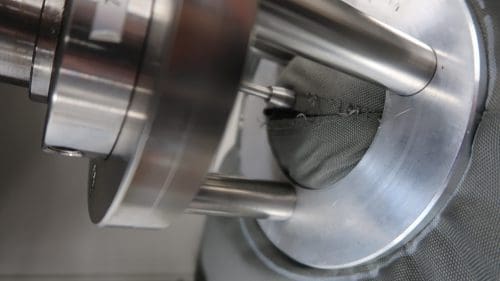
The comfort test is handled by a sweat plate, which heats the material on a membrane that mimics the sweating process, and then looks at how much energy is required to maintain the equivalent of body-core temperature. Since sweating is our way of losing heat, the more energy required, the better the material is at allowing sweat to escape.
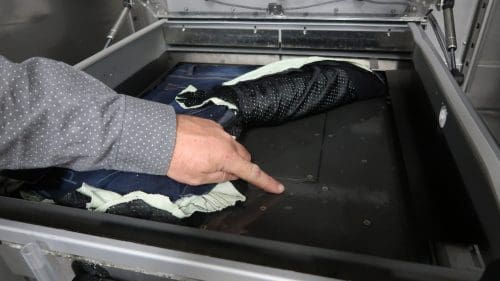
And the water resistance test? Pretty simple, really: A shop mannequin is dressed in neck to ankle cotton underwear, then in the test gear, mounted on a stationary Honda CB125e and blasted for 20 minutes with water from a pressure-washer aimed at the bike’s headlight. After the test, the underwear is weighed and the amount of water that has seeped in is calculated.
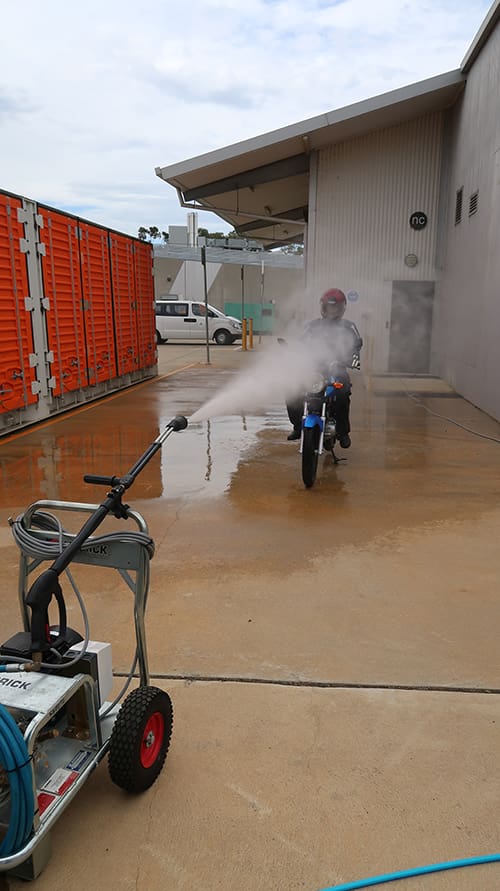
The impact test is used on the body-armour bits and pieces in riding gear and looks, frankly, a bit medieval. But essentially, the rig drops a five-kilo weight onto the impact material at 16km/h and measures the force absorbed (or not) by the protector. Other elements to the impact test involve measuring how much of the body is protected by the armoured section (and there’s different weighting – or importance – placed on specific areas such as elbows, shoulders and hips) and how well the armour is secured within the garment to stop it moving away from the area it’s supposed to protect when things get real and you’re dumped on to the road.
Industry support
You might expect the motorcycle clothing industry to be a bit leery about MotoCAP and what it’s up to, but the industry movers and shakers we spoke to were well in favour of the move. General manager of major importer Cassons, Geoff Wood, told AMCN he absolutely approves of the testing regime.
“We are passionate as a team about motorcycle safety,” he said, “(and) consumers need a reference point, as we don’t have the standards on riding apparel that exists in Europe.”
That general view is backed up by Joel Ryan, business development manager at accessories distributor Ficeda.
“I believe it’s (MotoCAP) a great initiative. For us as a company, it helps support the message we have been telling our customers for years. It highlights the differences between products and makes customers think about their purchase and, hopefully, ask the question: How safe is this product?”
So how could the process be improved? Joel reckons that while the testing is done logically and in-depth, he does raise a question over the comfort rating side of things.
“I find the comfort rating quite arbitrary, as every rider is going to have a different body shape. There’s no consideration taken of what style of riding the product is designed for. A race-style product is never going to be as comfortable as a casual-style garment, so this is a hard factor to directly compare.”
That said, Joel would be happy for all of his company’s gear to be tested and for the testing process to be rolled out across the entire industry.
“All of our products (that have been tested so far) have tested very well. I guess the cost in running such a program would be quite high. There’s a lot of gear available, so it’s going to be a big job to test it all. But without a full range of products to compare, there is no way the customer can make a completely informed decision.”
Educated decisions
According to MotoCAP partner the RACV, the ratings scheme of riding gear is important because, until now, we riders have been buying in the dark. And according to the motoring club’s chief engineer, Michael Case, that’s because the usual marketing that makes us buy a product has nothing to do with safety when it comes to riding gear.
“You can’t tell the likely performance of the gear just by looking at it,” he told AMCN. “Price, brand name and even the materials used are not indicators of how protective a piece of riding gear will be.
“Most people think of helmets as the centre of motorcycle safety, but a helmet is only part of the story. But now, if we can use the ratings system to provide information on things besides helmets, we can create a demand for safer products generally.”
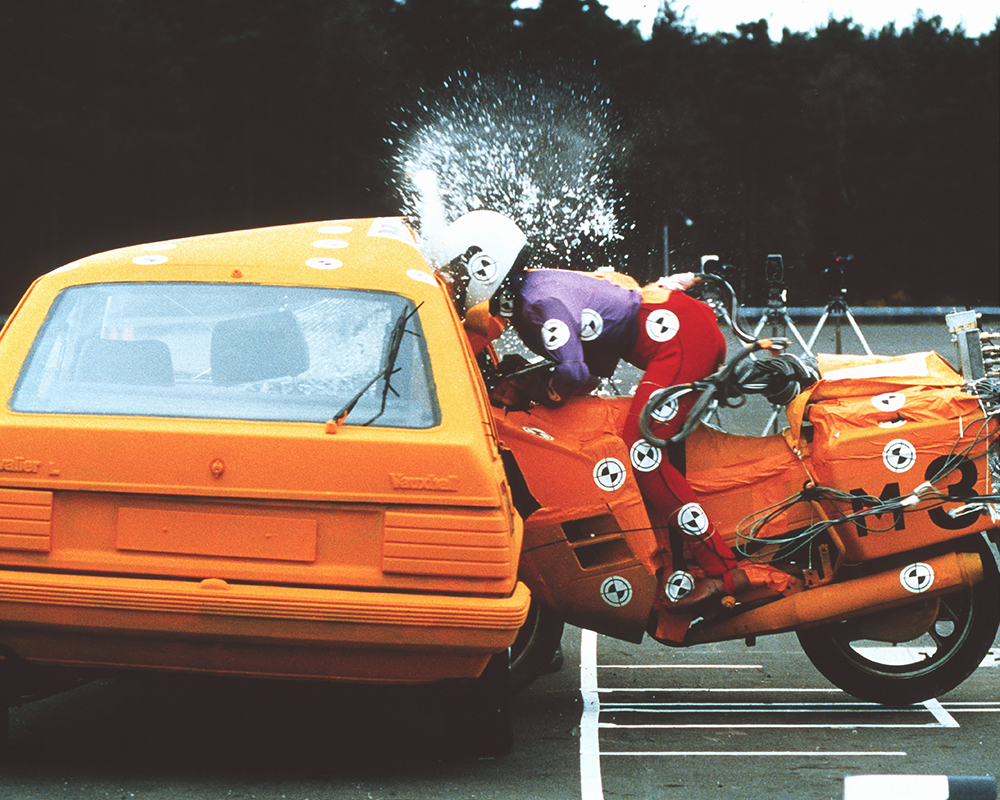
Words Dave Morley
Photography AMCN Archives & DM



